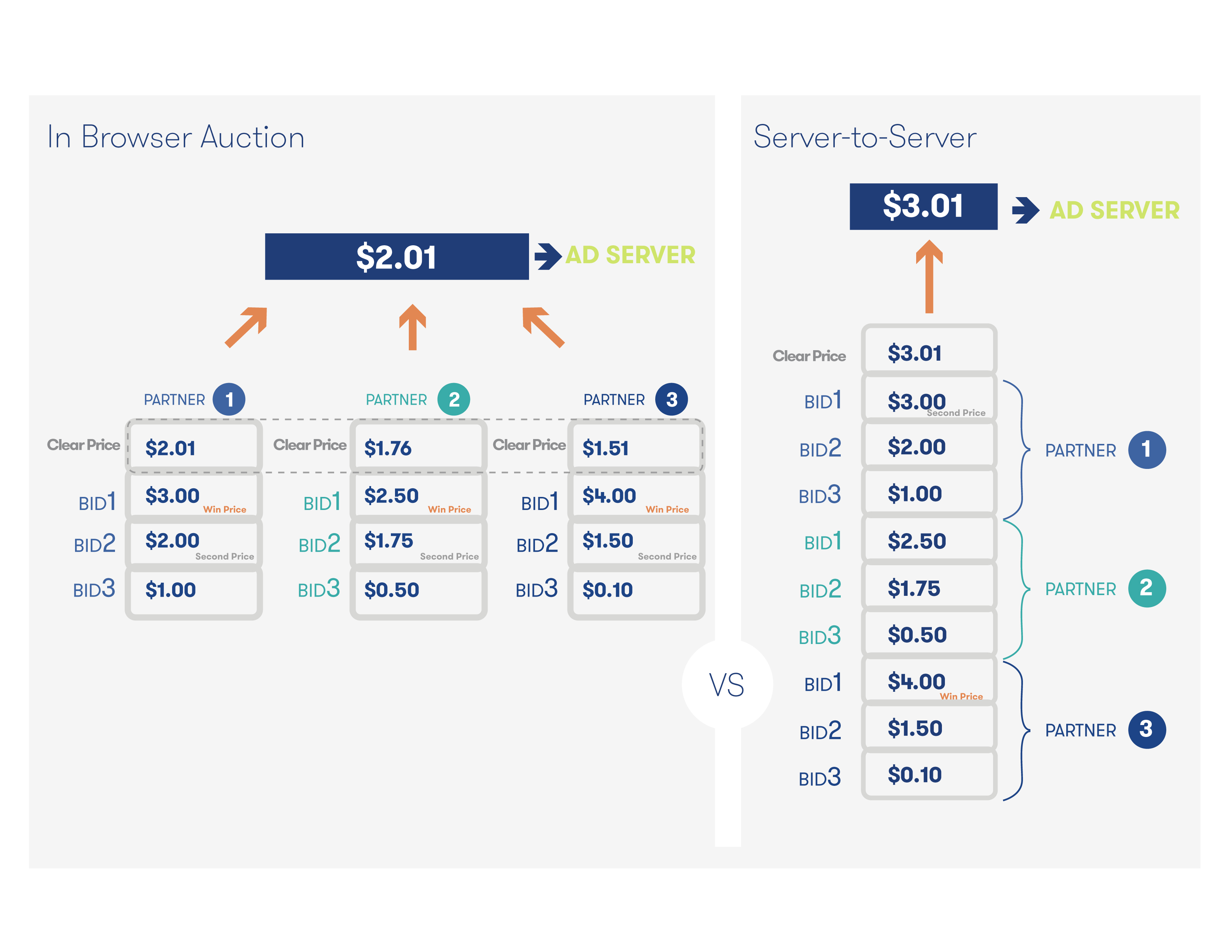How publishers manage header bidding: Server-to-server vs. browser-based wrappers

by John Donahue, Chief Product Officer, Sonobi
For an imperfect technology, header bidding had a big year in 2016. Over 40 percent of the comScore 200 adopted header based technologies. When presented with an opportunity to drive incrementally higher yield by creating pressure on exchanges and traditional waterfall partners–publishers said “yes.”
The average publisher saw a one-time accretive yield bumps of 20-30 percent on their programmatic effective CPMS (or eCPMs, which for a publisher are total earnings divided by impressions) after implementing header tactics. Publishers’ programmatic teams, definitely took notice, continuing to add partner after partner to continue building that yield improvement.
The result?
eCPMs improved, but new partners meant new costs. These included increased page latency, and a corresponding decrease in average page views per session. Tech ops budgets increased significantly, and an untenable strain was placed on ad servers as the amount of line items they managed continued to multiply. In fact, due to the complex ad server configurations required for handling multiple partners and buys, some publishers even saw disruption in their directly sold campaigns.
It was clear that a new solution was needed and so the browser-based header wrapper was born.
Designed to help publishers better organize and manage the page integration of their header-based partners, this wrapper did help manage latency and tech ops budgets, while helping cap the ad server line item issue. However, while latency was managed, it wasn’t eliminated. Compromised user experience and reduced page views remained a serious issue for publishers. Furthermore, the wrappers were impacting yield, by breaking the auction mechanics.
Ad position: web_incontent_pos1
In a comparative “auction”– one which compares the first prices returned from each bidder– publishers are effectively comparing multiple second price auctions that have been pre-compressed. Bids that could have won, and thus generated maximum yield, are losing to lower bids bound to second price in the individual auctions. Here is an example of what that can create:

Even with browser-based header wrappers, user experience suffered, yield was negatively impacted, and publishers continued to leave money on the table. If only these auctions could be unified, perhaps by adding only a single tag to the page, which could facilitate direct server-to-server communication unifying publishers with all bidders in real-time! This would improve yield while minimizing negative user experience issues, including the decay seen in average pages per visit.
Enter server-to-server bidding
Companies from Sonobi to Amazon are now offering this solution that drives yield, while fixing some of the egregious design flaws that exist with browser-based wrappers. Server-to-server uses JavaScript and online real-time bidding for the purposes they were originally intended.
Ad position: web_incontent_pos2
While header bidding has made quite the impact, the industry needs to step back and understand that the wrapper, as commonly implemented today, is poorly designed. Header bidding was developed by publishers’ programmatic teams, but these browser-based executions are affecting the value of their consumer product. A server-to-server model is a better path to drive more yield through the header while protecting the most important thing in media: the relationship between reader and content.
In the coming year I look forward to seeing which publishers will acknowledge this fundamental truth and act accordingly. By fixing the hack that is browser-based wrappers we can collectively make the internet a better place.
More from Digiday
Sliders test article
Amazon bulldozes into new markets, upending the status quo and challenging rivals. Today, it’s the turn of the ad-supported streaming world, and Amazon is coming out of the gate strong. Why, you ask? Because Amazon is serving marketers an opportunity beginning today to reach a whopping 115 million monthly viewers in the U.S. alone, courtesy […]

How CTV and DOOH are growing this political season for smaller agencies
Connected TV and digital out-of-home are playing a bigger role in upcoming elections and politics – especially for smaller agencies looking to place clients’ dollars.

CMO Strategies: Advertisers identify the top attributes on ad-supported streaming platforms
This is the third installment in Digiday’s multi-part series covering the top ad-supported streaming services and part of Digiday’s CMO Strategies series. In this report, we examine which ad attributes matter the most to marketers on streaming platforms.
Ad position: web_bfu